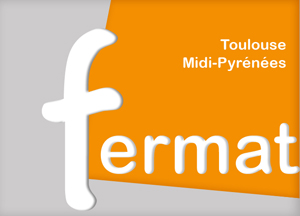Mode interactions in external flows
Javier Sierra-Ausin
Mercredi 26 avril à 11 h 30
University of Salerno, in the Department of Industrial Engineering, building E, room 118
Moreover, a videoconference connection has been set up at the following link:
https://diin-unisa.webex.com/diin-unisa-en/j.php?MTID=mc5ae134211004ebdebc6c490e2701240
Abstract:
In this thesis, we study the formation of coherent structures in the early stages of transition from a laminar state towards a chaotic attractor. We aim to unveil the rich array of dynamical characteristics appearing in the laminar-chaos transition of external flows, and to determine some the universal ingredients in the transition. In particular, we analyse the formation of large coherent structures under the competition between multiple global instabilities. These techniques are applied, to a different extent, to multiple physical problems: acoustics, wake and jet flows and problems with moving interfaces.
In acoustic problems, the instability of the jet flow past a hole is analyses in terms of its transfer function, the impedance, which allows us to consider the incompressible problem, as long as the flow is acoustically compact. The continuation of the emerging limit cycle from the self-sustained instability is carried out following a fixed-point method for limit cycles, which also provides information about sensitivity quantities. The flow problems with moving interfaces require of the development of novel numerical techniques to analyse the issuing instabilities. Herein, we explore the techniques of a linearised diffusive Immerse Boundary Method in a case with Vortex-Induced-Vibrations (VIV), and the linearised Arbitrary Lagrangian Eulerian tecnique for the dynamics of a bubble in a straining flow.
In the case of multiple interacting flow instabilities, we analyse the organising centres: the steady-steady bifurcation with 1:2 resonance condition in the configuration of two concentric jets, a codimension-three Takens-Bogdanov bifurcation in the case of the wake flow behind a spinning cylinder, the steady-Hopf bifurcation in a case of an axisymmetric wake flow, and the triple Hopf in two cases, the wake flow dynamics behind a rotating particle (non-resonant) and the sound emissions of a rounded impinging jet (resonant). In addition to the qualitative description of the dynamics and the formation of spatio-temporal patterns in the flow, the analysis of these organising centres offers information about the connections between the underlying baseflow/perturbations and the nonlinear transitions. For instance, the existence of a (near-)resonance condition in the case of the rounded impinging jet suggests for the existence of a non-local feedback mechanism, which is herein analysed using a decomposed notion of the structural sensitivity tensor.





